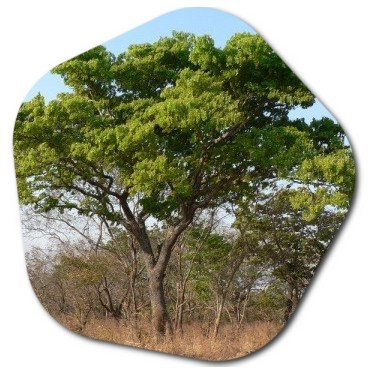What type of trees are found in Zambia?
Zambia is home to a diverse range of tree species, which contribute to the country’s rich forest ecosystems. Here are some notable types of trees found in Zambia:
- Brachystegia Species: Brachystegia is a genus of trees commonly known as miombo trees, which are the dominant species in the miombo woodlands of Zambia. The miombo woodlands cover extensive areas and consist of various Brachystegia species, including Brachystegia spp., Brachystegia boehmii, Brachystegia floribunda, and Brachystegia spiciformis.
- Zambezi Teak (Baikiaea plurijuga): The Zambezi teak is a large and valuable hardwood tree found in Zambia. It is known for its durability and attractive grain patterns. The timber of Zambezi teak is used for furniture, flooring, and construction purposes.
- Mupapa (Julbernardia paniculata): Mupapa is a deciduous tree species commonly found in Zambia’s woodlands. It can grow to substantial heights and has characteristic large, compound leaves. Mupapa trees are valued for their timber and are also known for providing edible fruits.
- Marula (Sclerocarya birrea): The marula tree is widespread in Zambia and is well-known for its nutritious fruits. The tree is culturally significant and has multiple uses. The marula fruits are used to make juices, jams, and alcoholic beverages, such as the popular marula beer.
- Mukwa (Pterocarpus angolensis): Mukwa is a hardwood tree species found in Zambia’s woodlands. It is highly valued for its durable and termite-resistant timber, which is used for furniture, flooring, and construction. Mukwa trees have distinct reddish-brown heartwood.
- Miombo Mahogany (Khaya anthotheca): The miombo mahogany is a large tree species found in the miombo woodlands of Zambia. It is known for its durable timber, which is used for furniture, cabinetry, and construction. The tree also produces edible fruits.
- Baobab (Adansonia digitata): Baobab trees can be found in certain parts of Zambia. These iconic trees have large, swollen trunks and are known for their ability to store water. Baobabs have multiple uses, including providing food, medicine, and raw materials.
These are just a few examples of tree species found in Zambia. The country’s diverse ecosystems, ranging from woodlands to riparian forests, support a wide variety of tree species, each playing a vital role in the ecological balance and providing various benefits to local communities.
What is the most common tree in Zambia?
The most common tree species in Zambia is the Brachystegia genus, which is collectively known as miombo trees. The miombo woodlands, dominated by Brachystegia species, cover a significant portion of the country and are considered the predominant forest type in Zambia. Within the miombo woodlands, several Brachystegia species can be found, including Brachystegia spp., Brachystegia boehmii, Brachystegia floribunda, and Brachystegia spiciformis.

Miombo trees are well-adapted to the seasonal climate of Zambia, characterized by a distinct wet and dry season. These deciduous trees shed their leaves during the dry season to conserve water, and new leaves emerge with the onset of the rainy season. The miombo woodlands provide habitat for various animal species, contribute to water regulation, and offer timber and other forest products for local communities.
While the miombo trees, specifically the Brachystegia genus, are the most widespread and dominant tree species in Zambia, it’s important to note that Zambia’s diverse ecosystems also support other tree species, such as Zambezi teak, mukwa, mupapa, and marula, which vary in abundance depending on the specific region and habitat within the country.
What are examples of exotic trees in Zambia?
Exotic trees in Zambia refer to tree species that are non-native to the country and have been introduced from other regions or countries. These trees are often planted for various purposes, such as timber production, landscaping, or ornamental purposes. Here are some examples of exotic tree species that can be found in Zambia:
- Eucalyptus (Eucalyptus spp.): Eucalyptus trees, native to Australia, are commonly grown in Zambia. They are fast-growing and known for their high-quality timber and ability to thrive in different soil and climatic conditions. Eucalyptus trees are often planted for timber production and are also used for erosion control and as windbreaks.
- Pine (Pinus spp.): Pine trees, including species such as Pinus patula and Pinus radiata, have been introduced to Zambia and are widely cultivated for commercial timber production. These coniferous trees are known for their straight trunks and are used in construction, furniture making, and as a source of wood pulp.
- Jacaranda (Jacaranda mimosifolia): Jacaranda is an ornamental tree native to South America but has been introduced to Zambia and other parts of the world. It is valued for its beautiful, lavender-colored flowers that bloom in the spring. Jacaranda trees are often planted for their aesthetic appeal in parks, gardens, and along streets.
- Norfolk Island Pine (Araucaria heterophylla): The Norfolk Island Pine, native to Norfolk Island in the Pacific, is a popular ornamental tree in Zambia. Its symmetrical growth habit and evergreen foliage make it an attractive choice for landscaping and decorative purposes.
- African Mahogany (Khaya senegalensis): While Khaya senegalensis is native to West Africa, it has been introduced to Zambia and other countries in the region. African Mahogany is valued for its timber, which is used in furniture making and cabinetry. It is often planted in agroforestry systems and for reforestation efforts.
It’s important to note that while exotic trees can bring benefits, such as timber production or ornamental value, they can also pose ecological risks if they become invasive or outcompete native species. Careful consideration and management are necessary to ensure the balance between exotic and native trees in Zambia’s ecosystems. Which trees grow well in Zambia? Popular Trees of Zambia





